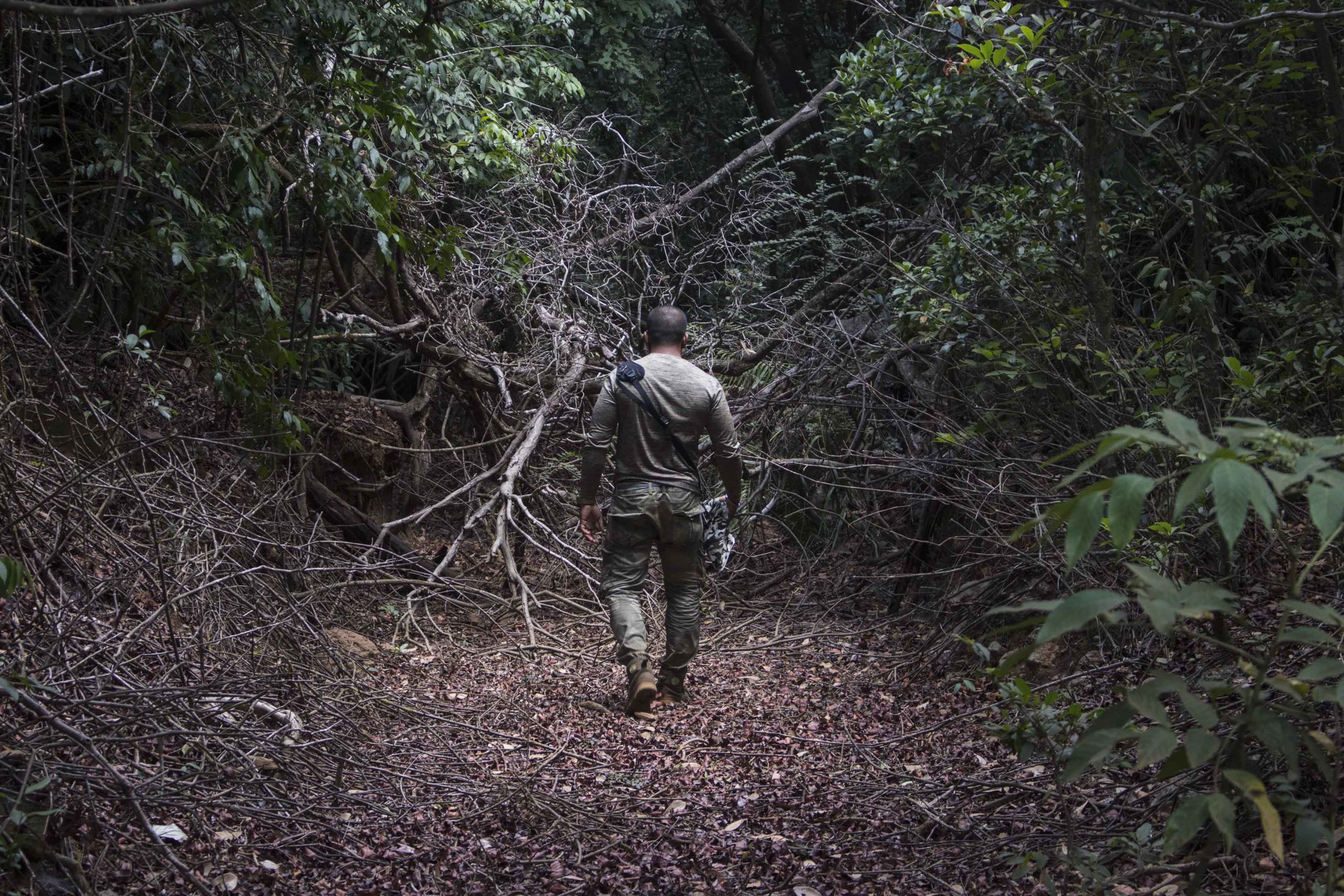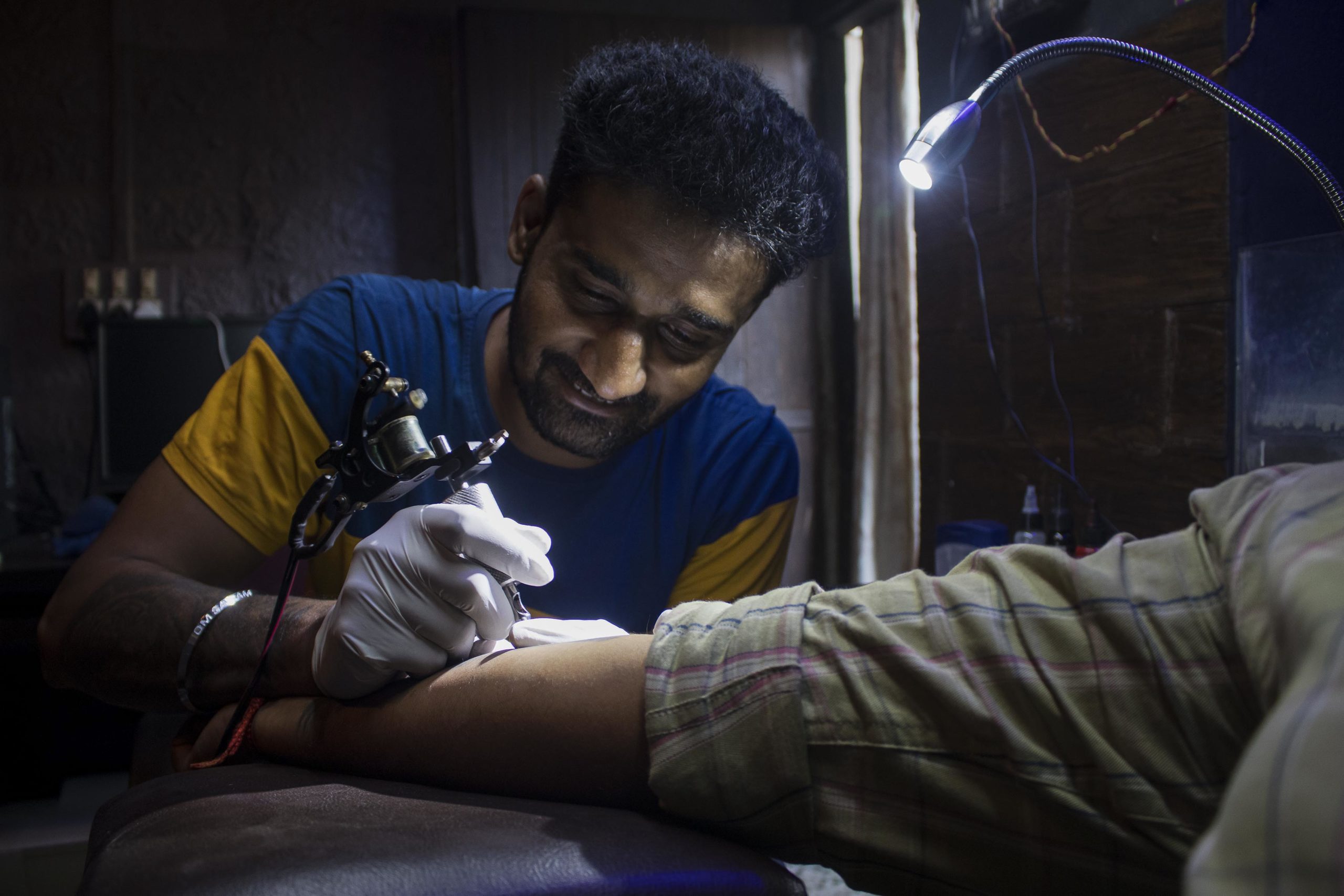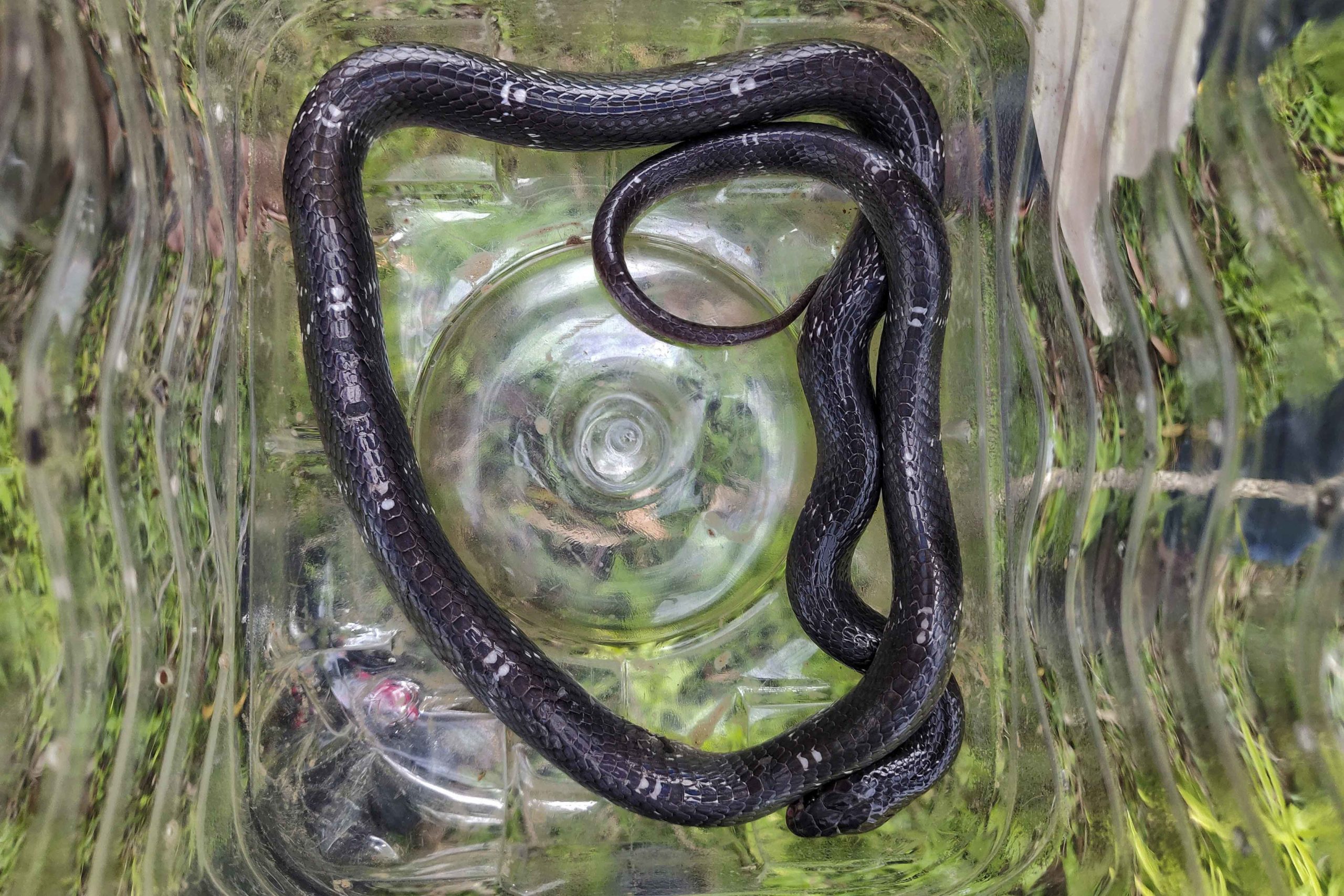Volunteers save thousands of human and animal lives
In the first of a two-part series on conservation in India, the spotlight falls on snake rescuers who teach communities to live and let live as far as these reptiles are concerned.
Author:
10 November 2021

Devendra Bhosale, 37, never imagined becoming passionate about something that would nearly kill him twice. It started in early 2000 when a snake was spotted at his neighbour’s house in Kolhapur in Maharashtra state, India. Panic-struck, nearby residents phoned Bhosale assuming he would be able to rescue it. “Everyone thought since I trek through jungles, I would know about snakes,” he says.
Through sheer luck, Bhosale managed to catch the buff striped keelback, which is neither venomous nor aggressive, and the rescue was enough to give him the title of sarpmitra (snake rescuer).
Soon he started getting four to five snake rescue calls daily, but he realised that catching these reptiles without any knowledge of their species and behaviour was suicidal. Bhosale tried his best to learn more about them from books or on the internet, but it was difficult.
Coincidentally, a travelling caravan of wildlife researchers and volunteers made its way to Kolhapur and Bhosale met conservationist and herpetologist Amit Sayyed, who would become his mentor. “For two years, I was talking to [Sayyed] on the phone,” he says.

Slowly he learnt to identify and catch snakes safely and give people advice on snakebites. He also joined the Wildlife Protection and Research Society (WLPRS), a non-governmental organisation founded by Sayyed in 2000.
Today, Bhosale has lost a count of how many snakes he has rescued, but he says it must be over 20 000. To pay for this, he works several odd jobs and is currently a security guard at a private university. Sometimes, he takes on extra work as a bouncer and wedding photographer to make ends meet.
It didn’t take long for Bhosale to be hospitalised because of severe snakebites. “I would touch the snake, or accidentally even their mouth, which is quite risky,” he says.
In 2005, a Russell’s viper, one of the most venomous snakes in India, landed him in hospital for 15 days. Unaware of what needs to be done after a snakebite, Bhosale phoned Sayyed, who quickly guided him. “It was the closest I’ve come to death,” he says. “It was only because of [Sayyed] that I survived.”
Saving lives
Sayyed has counselled and saved the lives of over 10 000 snakebite victims across India in the past two decades. He shares his phone number on social media so that victims can reach him easily. “I get at least five to 10 calls daily,” he says.
Between 2000 and 2019, India reported 1.2 million snakebite deaths, the highest in the world. Farmers and agricultural workers are among the most-often bitten. The World Health Organization says there are an estimated 5.4 million snakebites globally each year that kill between 81 000 and 138 000 people, while the rate of amputations and other permanent disabilities in survivors is three times that. These deaths are reported mainly in Africa, Latin America and Asia. Few countries manufacture antivenins, which has led to a dire shortage of life-saving treatment.
For Sayyed, this has meant finding a different solution by reducing the number of snakebites as much as possible and getting volunteer rescuers in or near far-flung villages.

“It was important to focus on the everyday people who are from the same community because rescuers can’t always reach the village in time,” explains Bhosale. So Sayyed began posting calls for volunteers on social media with “one village, one rescuer” as his goal. He got over 10 000 responses and 1 400 of them would become his team members across 10 states in India.
“Only rescuing and identifying snakes is not enough,” says Sayyed. “One should also know about their behaviour.” So first he trains volunteers to identify the different species and that is followed by a detailed analysis of each one.
“Just like humans, every snake is scared too,” says Ashutosh Suryawanshi, 34, a tattoo artist from Kolhapur who is a WLPRS volunteer. “When someone tries to forcefully attack them, block their path or accidentally step on them, they bite, which is a personal safety response.”

The WLPRS team members always ask people to go to hospital as quickly as possible in case of a snakebite. “A big mistake people make is not identifying the snake, further making the treatment difficult,” says Suryawanshi.
Therefore, WLPRS volunteers ask for a photo of the snake, if possible. If not, the victims or witnesses can use an archive of over 30 000 photos taken by the volunteers and Sayyed to identify their problem snake. “With photos, we make people aware of what a cobra or any wildlife creature looks like,” says Bhosale.
If none of this works, Bhosale and Sayyed let themselves be guided by the symptoms of the snakebite victim. When WLPRS team members cannot reach a village, they use video calls to diagnose the types of bites and advise victims on treatment. They also help the community members rescue snakes via video calls.
The team has also made videos to teach people about bites and create awareness of how to avoid or treat them.
Team spirit
Sayyed and Bhosale’s diverse team includes members from more than 50 occupations and features street vendors, farmers, agricultural workers, mechanics, security guards, bouncers and martial artists. They all have three things in common: little money, a lack of formal education and a passion for wildlife conservation.
“Lots of self-proclaimed snake rescuers end up doing more harm [than good],” says Suryawanshi. He recalls a case in which a snake “rescuer” in Kolhapur falsely claimed a Russel’s viper was not venomous. “The villagers remembered this and began assuming the viper isn’t dangerous. Within a few months, this carelessness led to a fatality.”
Bhosale and Suryawanshi have observed people trying to extract a snake’s venom using a blade to cut into the sites of a bite. This has led to cases of gangrene followed by amputation. Severe blood loss has also resulted in deaths.

Bhosale and the WLPRS team have helped prevent several such instances of death. Two months ago, Pravin Babar, 17, from Rukadi village, was bitten by a Russel’s viper at around 8pm. Immediately, the family phoned local snake rescuer Sarfaraz Patel. “It was a venomous bite that caused a lot of internal bleeding. The case was so severe that none of us expected the boy to survive,” says Patel.
He phoned Bhosale, who guided him on the next steps and stayed in touch for eight days until Babar was discharged from hospital. “Several villagers had suggested using a blade to extract the venom, but Patel helped them avoid it, saving his life,” says Bhosale proudly.
“It’s about doing the basics right instead of coming up with costly solutions,” he adds. For example, in his sessions with agricultural communities, Bhosale advises farmers and workers to wear gumboots in the evening and carry a stick and a torch. “Though it sounds simple, it is life-saving,” he says.
Similarly, villagers who sleep on the floor are advised that it makes them vulnerable to snakes who are active at night. “Simple advice we give them is to start sleeping on cots or a heightened structure, which has saved several lives,” says Bhosale.

Creating awareness
A common belief that prevails across India is that snakebites can be healed by consulting religious pundits, who chant a few verses and do nothing else. “This has resulted in several deaths,” says Sayyed. “To counter this, we hold awareness sessions with the younger generation, who not just dismiss the unscientific claims but take what they’ve learnt to their homes.”
Another problem is people who handle snakes to make videos and attract attention on social media apps such as TikTok. “Unfortunately, this claim-for-fame mentality has cost several lives, predominantly affecting the rural communities,” says Sayyed.
Floods are on the rise globally and 3 254 flood events were reported from 2000 to 2019. In flood-prone India, as the floodwaters recede, people often find snakes, monitor lizards and even crocodiles. In the past, these animals would be killed out of fear, says Bhosale, but these days the WLPRS team can send volunteers to flood-affected villages to rescue them.

During the flooding in western Maharashtra in August 2019, the team rescued over 1 500 snakes and crocodiles, and the same happened this past July. “On average, we rescued at least 100 snakes daily for 15 days after the flood water receded,” says Bhosale.
Rescue operations like these mean not just protecting the wildlife, but have helped spark a discussion on the conservation of these feared reptiles.
According to Ashwini Jadhav, a professional martial artist and WLPRS volunteer, her rescuing of snakes has even helped to dismantle some gender stereotypes. “You are a woman. Will you be able to rescue snakes?” is a question she has heard almost every time she comes to rescue a snake. She just laughs and ignores it, saying it’s more important to make communities aware of snakebites.
“The biggest mistake people make is touching a snake while trying to rescue it,” says Jadhav, who advises that if rescue equipment is not available, one can use available items like discarded pipes, sacks or plastic bottles.

